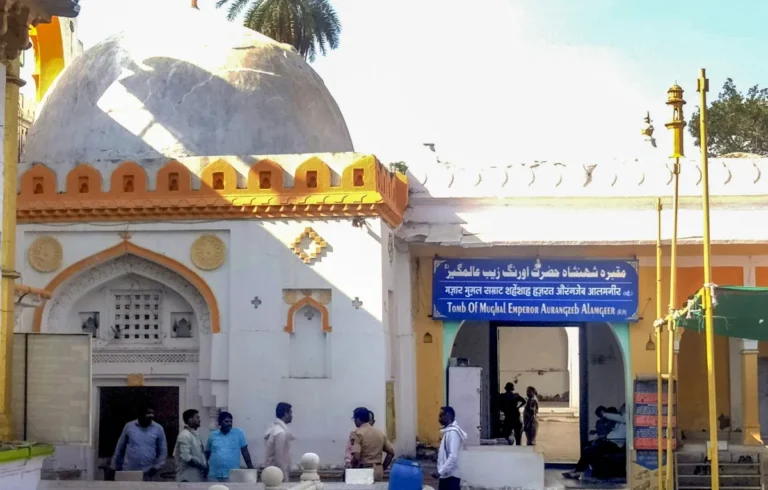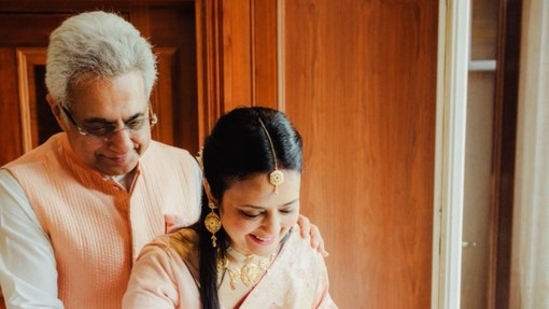The tomb of Aurangzeb, resting place of the 17th-century Mughal emperor, has sparked demands for its removal by Hindu groups, leading to a curfew being enforced in parts of a city in Maharashtra, India. This led to violence on Monday night, with vehicles being set on fire and stones thrown in the Mahal area of Nagpur city. The police say that the situation is now under control and are asking people to stay calm. Aurangzeb’s tomb, despite being over 300 years old, has recently become a controversial issue, with some hardline Hindu groups pushing for its removal.
The tomb is located about 500 km from Nagpur, in Chhatrapati Sambhajinagar district, which used to be called Aurangabad after the emperor. The violence on Monday began when two Hindu groups, Vishwa Hindu Parishad and Bajrang Dal, burned an effigy of the emperor and demanded the removal of his tomb, according to Maharashtra Chief Minister Devendra Fadnavis. Rumors then spread that some religious symbols had been damaged, which Fadnavis said triggered violence that seemed like “a well-planned attack.”
He said that after evening prayers, a group of 250 Muslim men gathered and started shouting slogans. “When people threatened to set vehicles on fire, the police used force,” he added. According to Nagpur police commissioner Ravinder Singal, more than 50 people have been detained, and 33 policemen were injured in the incident. Shops and businesses in Nagpur’s central areas remain closed, and security has been increased throughout the city. Opposition parties have criticized the state’s BJP-led government, claiming that “law and order in the state has collapsed.” The recent violence was triggered by a Bollywood film about Sambhaji, a Maratha ruler who fought against Aurangzeb but was defeated, with the film graphically showing his torture.
The movie has sparked public anger against Aurangzeb, Maharashtra’s Chief Minister Fadnavis told the state assembly. For days, the issue has been making headlines, with politicians from Hindu nationalist parties criticizing Aurangzeb and demanding the removal of his tomb. The situation escalated earlier when regional politician Abu Azmi stated that Aurangzeb was not a cruel ruler and had even built temples, which angered protesters. Azmi also mentioned that under Aurangzeb’s reign, India’s borders extended to Afghanistan and Myanmar, and the country’s GDP was a quarter of the world’s total. Though he later claimed his comments were misunderstood, Azmi was suspended from the state assembly, and an investigation was launched against him.
In 2022, Aurangzeb became a topic of debate on social media due to a court-ordered survey to investigate if a mosque, built over the Vishwanath temple that Aurangzeb had destroyed, stood on the ruins of a Hindu temple. His tomb was closed to visitors after a regional politician questioned its relevance and called for its destruction. Prime Minister Narendra Modi also criticized Aurangzeb during an event, highlighting the emperor’s “atrocities” and efforts to impose his rule through violence and fanaticism.
Who was Aurangzeb?
Aurangzeb was the sixth emperor of the Mughal empire, ruling India for almost 50 years from 1658 to 1707. He is commonly portrayed as a devout Muslim who lived a simple, ascetic life but was also known for being ruthless in expanding the empire, enforcing strict sharia laws, and imposing discriminatory taxes.
Do you want to catch up on everything? The Headlyne app makes sure that as soon as a headline is created, it reaches straight to your phone without wasting any time! Stay curious and informed with us.
Download the Headlyne app today.




